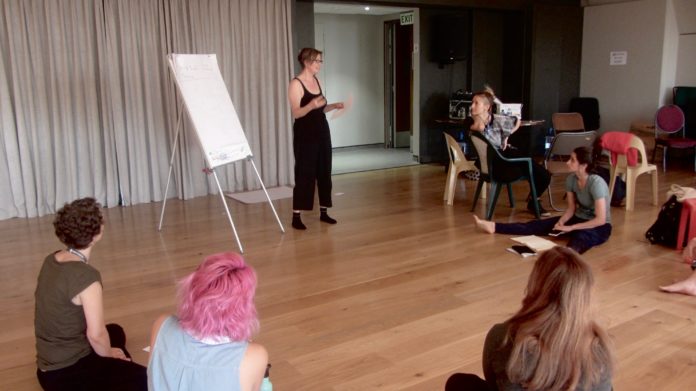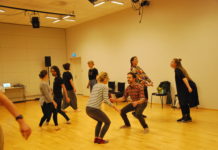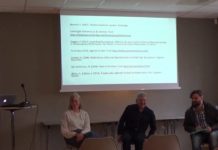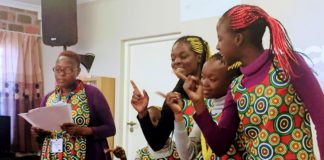The Baby Dance Workshop was facilitated by Dalija Acin Thelander, a Swedish Choreographer and Cultural Practitioner. I attended the first of her series of three workshops presented at ASSITEJ’s Cradle of Creativity.
To begin the session, Dalija outlined how important it is to understand the developmental needs of babies before even thinking about devising a performance for this age group. Some key points which she made in this regard include:
“We come into this world with a certain understanding of the self.”
“Babies, within the first 24 hours [after birth], can copy movement.”
“Babies’ brains are much faster, much more flexible, much more plastic than Adults.”
Armed with this knowledge, Dalija proposes a new and exciting methodology of devising Infant Theatre – one in which Artists have the freedom to be experimental in the space, outside the confines of a set narrative. As such, her practice is less about creating performance that evokes or communicates something specific, and more about helping babies to explore their surroundings in a more organic way.

Fundamental to Dalija’s practice is choosing the right space, which she suggests should be:
- Three-dimensional and tactile
- An immersive environment (visual, sensory)
- Surrounded by installations of Art
- Loose in structure
Her concept is to create a heightened sensory world for the babies – one which invites a variety of different responses – so that they maintain complete agency over how they experience the space. In this sense, the space itself is the choreography and the performers are just another part of the architecture. The performance space retains a timeless quality in the sense that the children can leave the space whenever they are ready. Combined, these building blocks of performance grant access to a completely immersive sensory world where there are no limits and the babies can interact on impulse.
One method of collaboratively devising Theatre for babies, proposed by Dalija in the workshop, is as follows:
1. Individually, write down a theme that the performance should explore. Examples include: senses, movement, stories, objects, narrative and flow, text, animal shapes, colours, music, and darkness.

2. Everyone then shares their chosen theme with the larger group.

3. Individually, each person writes down why they want the performance to explore their chosen theme. This helps define a purpose for the work and provides it with direction.
4. Write down all of the dramatic possibilities evoked by your theme. For example, if your theme was movement, you should explore all of the different movements you could choreograph within your performance.

5. Share these with the by clearly mapping out your concept on large paper, so that everyone can see and understand your vision.

6. Get creative with your ideas and experiment!









